As 1971 opened, preparations continued for the Jan. 31 launch of Apollo 14. In December 1970, engineers at NASA’s Kennedy Space Center (KSC) completed a major milestone to ready the spacecraft and its Saturn V rocket for the Moon landing mission, while senior NASA managers met to assess the readiness of all aspects for the flight. The Apollo 14 prime crew of Commander Alan B. Shepard, Command Module Pilot Stuart A. Roosa, and Lunar Module Pilot Edgar D. Mitchell, along with their backups Eugene A. Cernan, Ronald E. Evans, and Joe H. Engle, rehearsed various phases of their flight. The prime crew held a press conference to describe the goals of the mission, including the landing in the Moon’s Fra Mauro highlands. Preparations continued for Apollo 15, the first of the final three Moon landing missions with a greater emphasis on science.
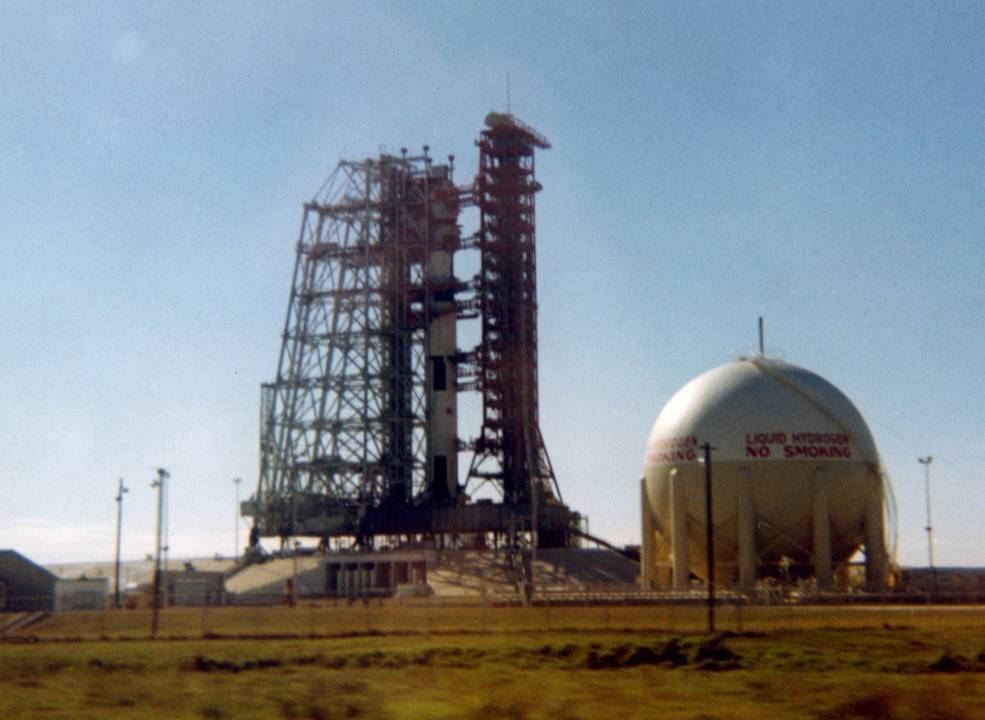
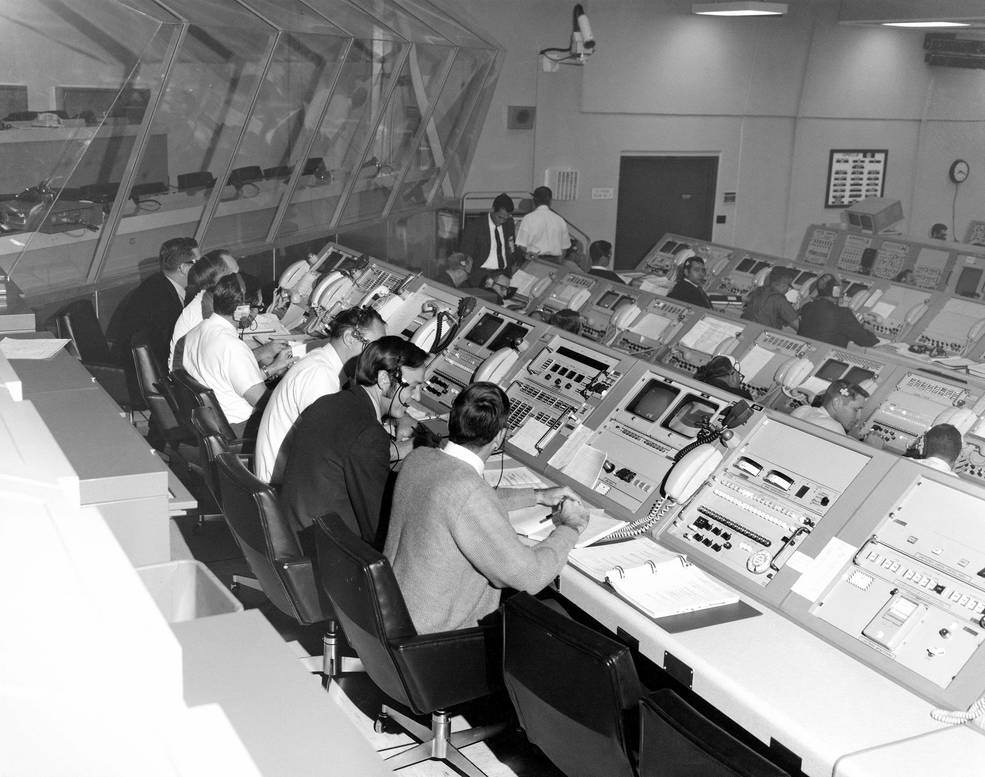
Left: The Apollo 14 Saturn V rocket on Launch Pad 39A at NASA’s Kennedy Space Center (KSC). Photo credit: J.L. Pickering. Right: Controllers at KSC’s Launch Control Center during the Apollo 14 Flight Readiness Test.
At KSC’s Launch Pad 39A, following completion of the Integrated Systems Test on Dec. 13, engineers electrically mated the Apollo spacecraft to its Saturn V rocket. From Dec. 17-18, workers completed the Flight Readiness Test (FRT) to ensure that all spacecraft and booster systems functioned as needed during the actual mission. The FRT included the checkout of the entire vehicle as if ready for flight with the exception of fueling the rocket. That phase of testing occurred during the Countdown Demonstration Test (CDDT) in mid-January 1971. On the same days as the FRT, senior managers from NASA Headquarters in Washington, D.C., and the directors of KSC, the Marshall Space Flight Center in Huntsville, Alabama, and the Manned Spacecraft Center (MSC), now NASA’s Johnson Space Center, in Houston, met for the Flight Readiness Review to assess the status of all components of the Apollo 14 mission. At the end of the review, the managers agreed to proceed to the CDDT and if that test revealed no issues to the Jan. 31 launch itself. On Dec. 31, NASA announced a modified plan for the return of Shepard, Roosa, and Mitchell to Houston following their splashdown in the southern Pacific Ocean. In the original plan, and as carried out after Apollo 11 and 12, the astronauts were to stay inside a Mobile Quarantine Facility (MQF) aboard the prime recovery ship USS New Orleans (LPH-11) as it sailed to Honolulu and then transfer to a transport plane for the flight back to Houston. To shorten the return trip by five or six days, the astronauts would exit the MQF aboard the New Orleans and be flown by helicopter to American Samoa, where they would enter a second MQF aboard a C-141 transport plane for the flight back to Houston to complete their 21-day quarantine in MSC’s Lunar Receiving Laboratory.
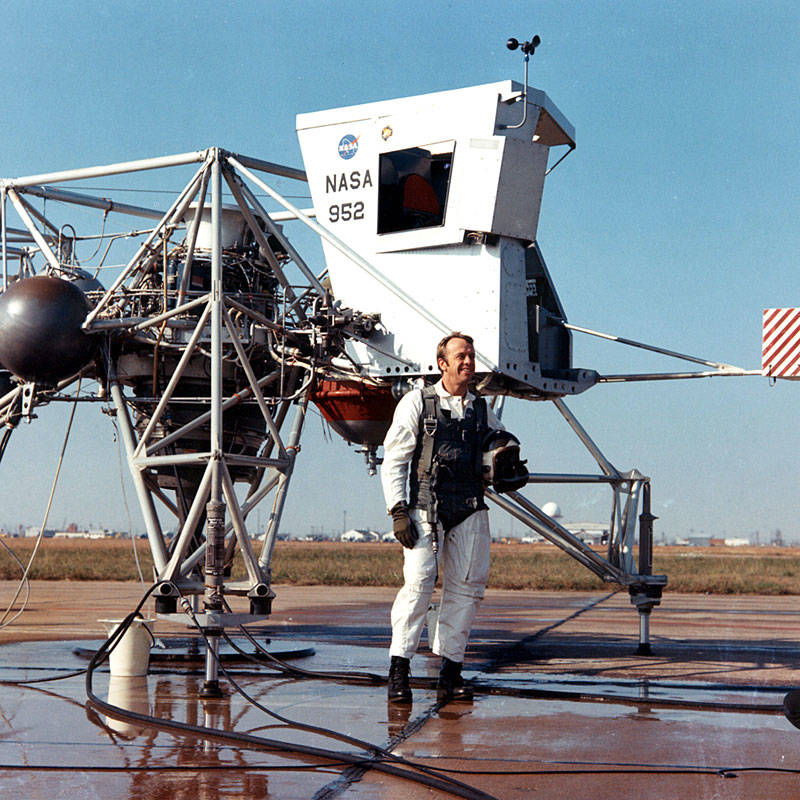
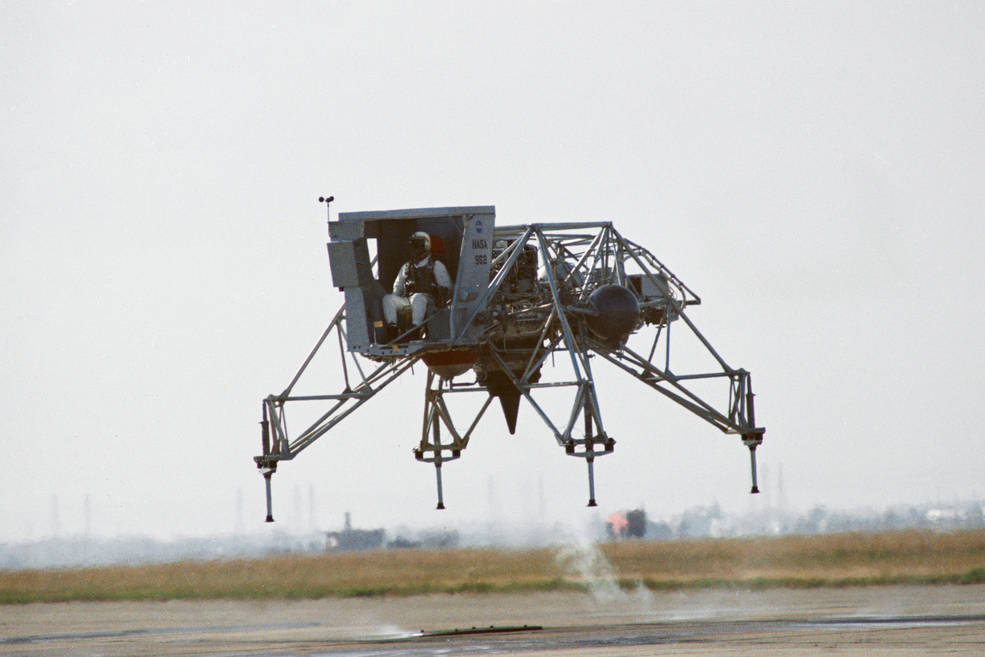
Left: Apollo 14 Commander Alan B. Shepard stands in front of the Lunar Landing Training Vehicle (LLTV) at Ellington Air Force Base in Houston. Right: Shepard flying the LLTV.
As their launch date approached, the Apollo 14 astronauts neared completion of their preflight training. Shepard and Cernan flew the Lunar Landing Training Vehicle at Ellington Air Force Base near MSC to practice the final several hundred feet of the descent to the lunar surface, completing their final flights on Jan. 5. The moonwalkers finished their training for the surface excursions, including deploying the scientific experiments, and received their final geology briefings. All the astronauts spent many hours in the spacecraft simulators, rehearsing various aspects of the flight, with controllers in the Mission Control Center at MSC participating in selected simulations to hone their skills. Flight directors M.P. “Pete” Frank, Milton L. “Milt” Windler, Gerald D. “Gerry” Griffin, and Glynn S. Lunney led the teams of controllers during the simulations and the actual Apollo 14 mission.
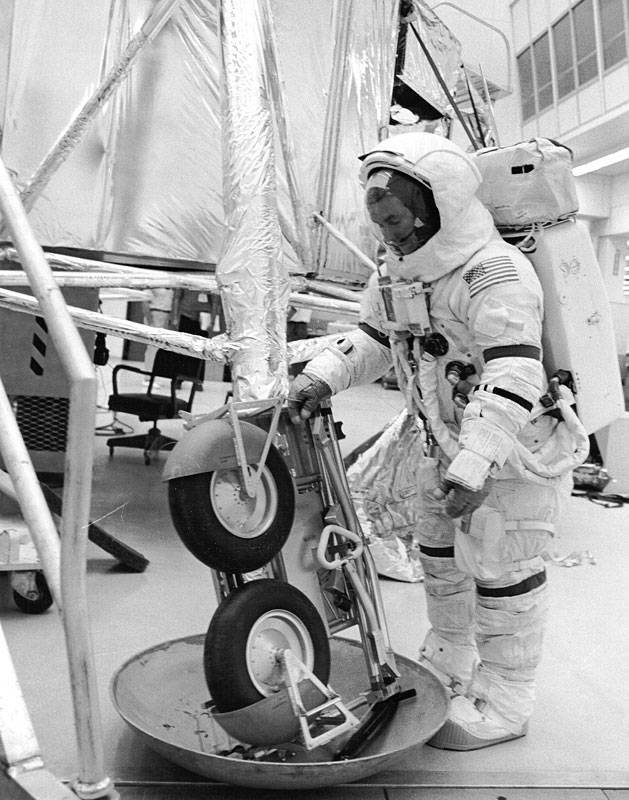
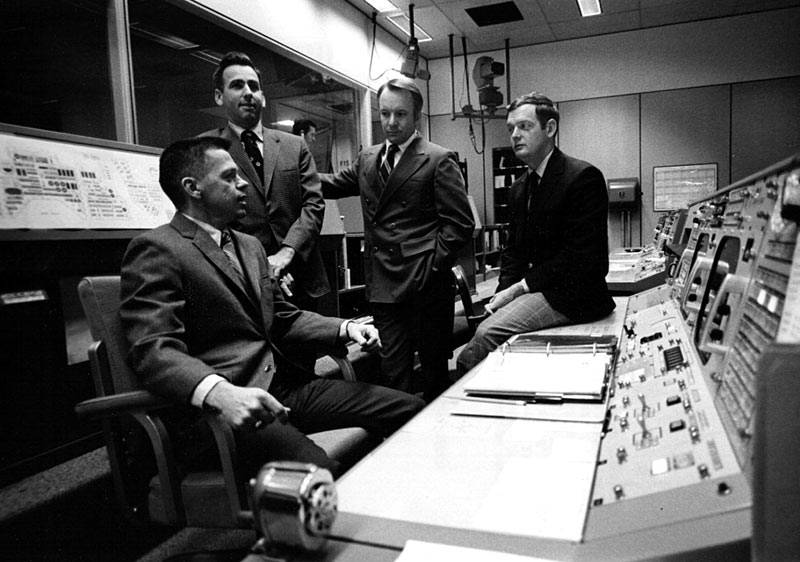
Left: Apollo 14 backup Commander Eugene A. Cernan practices deploying the Modular Equipment Transporter during a spacewalk training session. Right: Apollo 14 flight directors M.P. “Pete” Frank, left, Milton L. “Milt” Windler, Gerald D. “Gerry” Griffin, and Glynn S. Lunney in the Mission Control Center at the Manned Spacecraft Center, now NASA’s Johnson Space Center, in Houston.
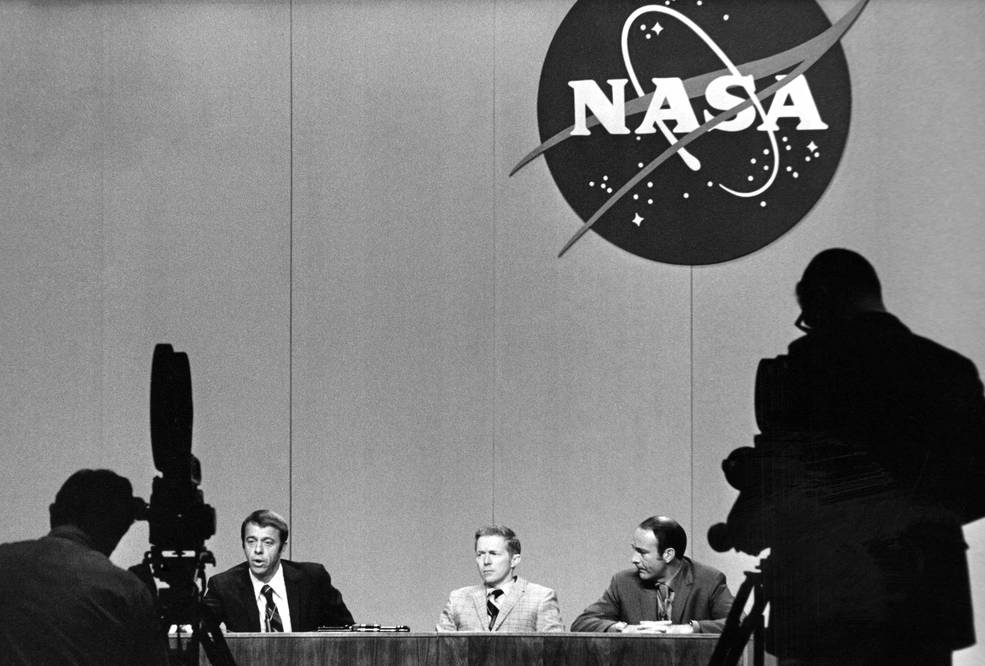
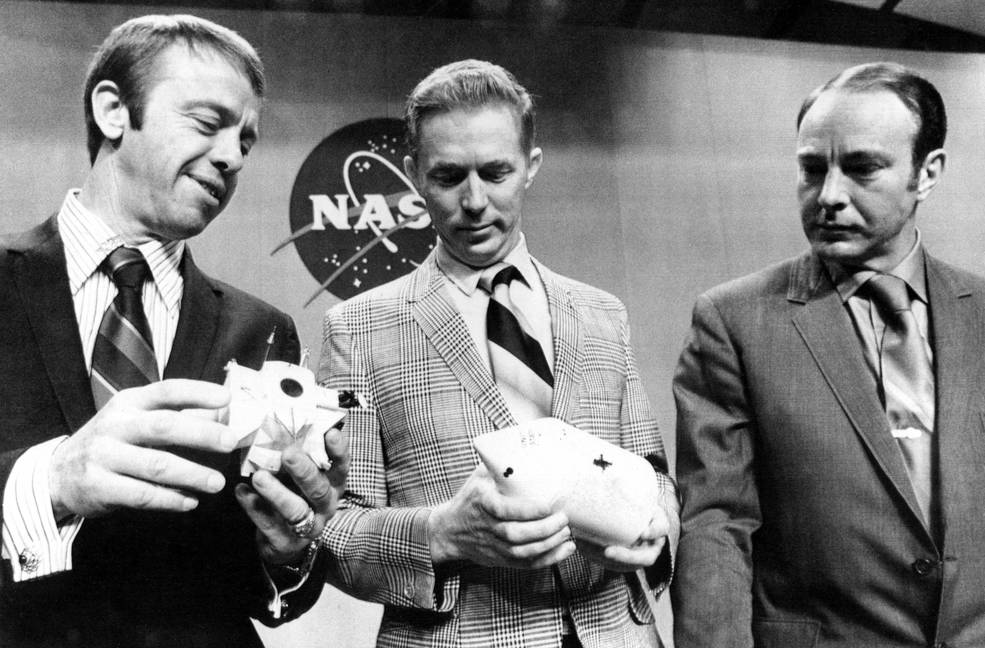
Left: Apollo 14 astronauts Alan B. Shepard, left, Stuart A. Roosa, and Edgar D. Mitchell during the preflight crew press conference at the Manned Spacecraft Center, now NASA’s Johnson Space Center, in Houston. Right: Shepard, left, Roosa, and Mitchell demonstrate the docking maneuver to the press.
On Jan. 9, Shepard, Roosa, and Mitchell held a press conference in MSC’s main auditorium. The astronauts announced that they chose the call signs Antares for their Lunar Module (LM) and Kitty Hawk for the Command and Service Module (CSM). They reviewed plans for their upcoming mission to Fra Mauro, including the two extravehicular activities (EVAs) conducted by Shepard and Mitchell during their 33 hours on the lunar surface, and the science that Roosa will conduct while remaining in lunar orbit in the CSM. Shepard and Mitchell described the use of a golf-cart like vehicle called the Modular Equipment Transporter to help them carry their tools and samples during the EVAs. In addition to the still photography and TV cameras carried on previous Moon landing missions, the Apollo 14 crew also documented their surface excursions with a motion picture camera. When asked about the modifications made to the CSM as a result of the Apollo 13 oxygen tank explosion, Roosa commented that “certainly we have a better spacecraft now. I’d say without a doubt it is more safe.”
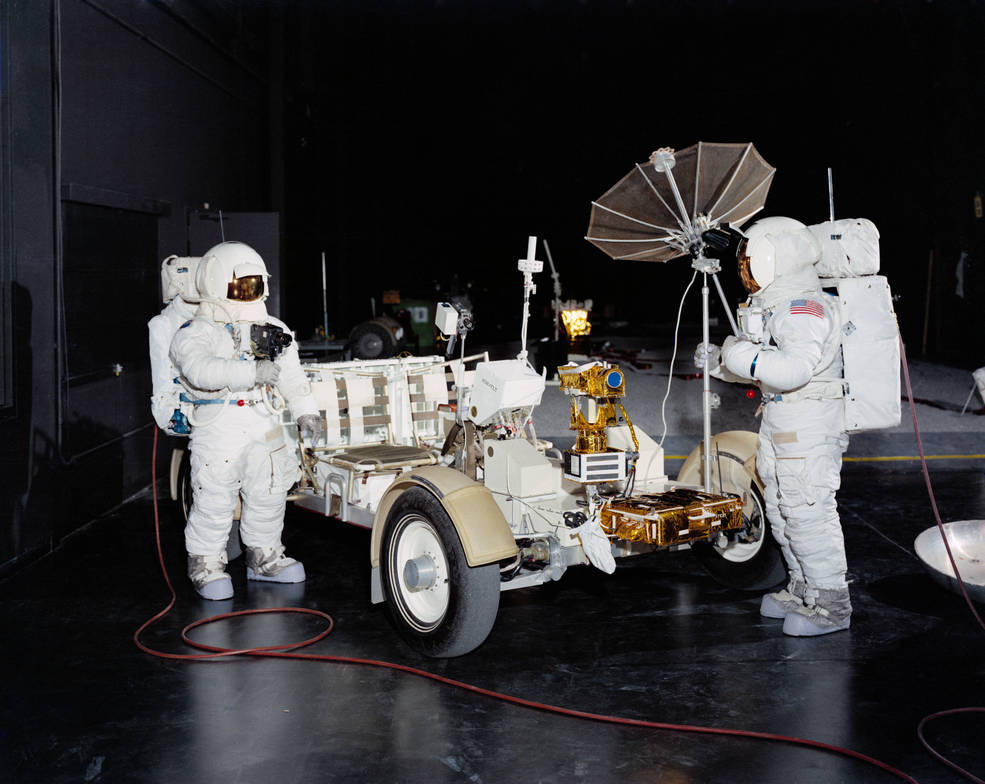
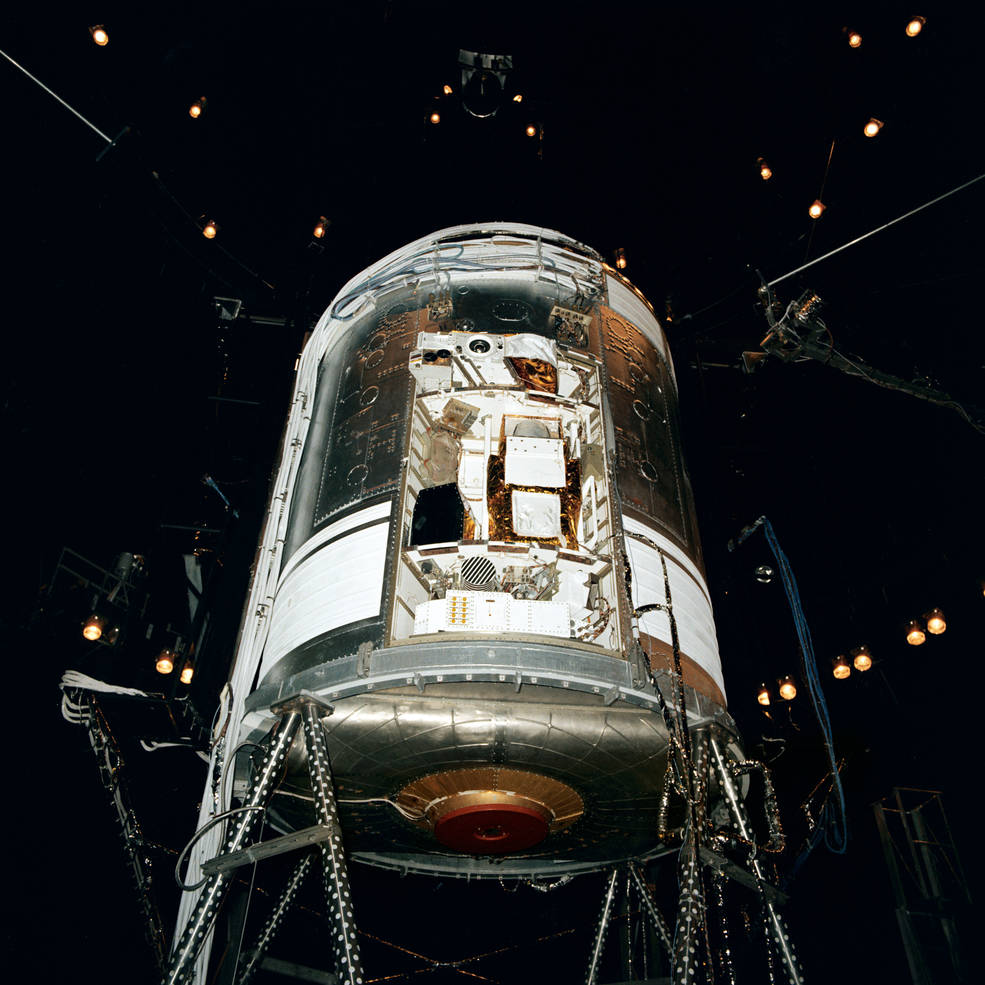
Left: Apollo 15 astronauts James B. Irwin, left, and David R. Scott with the Lunar Roving Vehicle 1 g trainer, practicing their lunar surface extravehicular activity. Right: Apollo 2TV-2 spacecraft with experiments installed in the Service Module’s Scientific Instrument Module for thermo-vacuum testing in the Space Environment Simulation Laboratory at the Manned Spacecraft Center, now NASA’s Johnson Space Center, in Houston
Even as the launch of Apollo 14 approached, preparations continued for Apollo 15, the first of the three final Moon landing missions with a greater emphasis on science than previous flights. Improvements to the LM allowed for three-day stays on the lunar surface, with the astronauts conducting three EVAs of up to seven hours each in duration. NASA contracted with the Boeing Co. to develop a Lunar Roving Vehicle (LRV) to allow the astronauts to travel greater distances in search of geologically interesting sites. Boeing delivered the 1 g LRV trainer to MSC on Dec. 16. Engineers modified the astronauts’ Extravehicular Mobility Units, or spacesuits, to enable the longer EVA durations. Science from lunar orbit also gained a boost with the addition of the Scientific Instrument Module bay (SIM-bay) to the Service Module, containing instruments to photograph the lunar surface and study the lunar environment, including a particles and fields sub-satellite ejected from the spacecraft before it left lunar orbit for the trip back to Earth. Engineers at MSC’s Space Environment Simulation Laboratory tested an Apollo spacecraft designated 2TV-2, used in an earlier configuration in 1968 to verify the thermal and vacuum characteristics of the CSM, to evaluate the ability of the SIM-bay experiment hardware to withstand the temperature extremes of the space environment.
To be continued…
World events in January 1971:
January 1 – The United States bans cigarette ads on television
January 12 – “All in the Family” premieres on CBS
January 12 – Congressional Black Caucus organizes in the U.S. Congress
January 15 – The Aswan Dam opens in Egypt
January 15 – George Harrison releases “My Sweet Lord” single in the U.K.
January 20 – Marvin Gaye releases “What’s Going On” single
January 25 – Charles Manson and three women followers convicted in the Tate-LaBianca murders
January 25 – Idi Amin seizes power in Uganda military coup


























